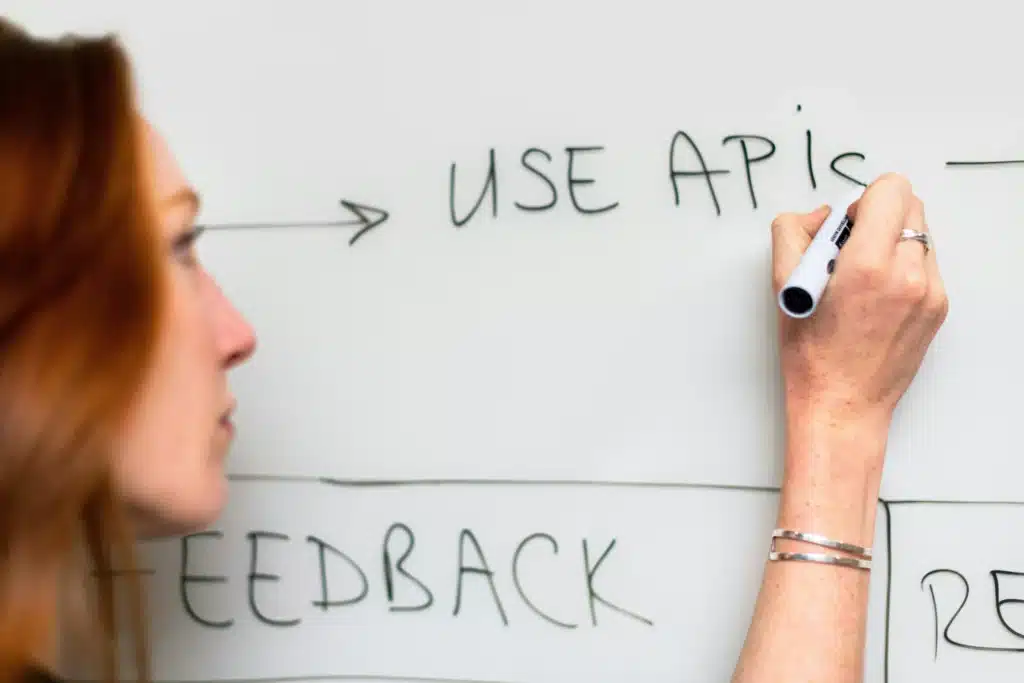In an ideal world, all systems within a company would work seamlessly together. Data flows effortlessly between departments, workflows are automated, and reports are generated in real time. But in reality, this is rarely the case, and people still often work with fragmented systems.
Many organizations still rely on disconnected software solutions: a CRM for customer information, an ERP for logistics, accounting software for finance, a separate tool for project management, all well functioning systems, but they operate in silos.
What does this mean for companies?
In the short term, this may seem like a workable solution, but as companies grow, these inefficiencies become a real growth barrier.

One of the biggest problems with separate systems is that data doesn’t sync. A customer record in the CRM could be outdated compared to the financial database, or stock status in the ERP might no longer match the webshop.
This leads to errors such as:
Without a clear, central truth, a company operates with contradictory information.
Companies that rely on separate systems spend a huge amount of time on manual tasks. Think of an employee creating a quote in the CRM and then manually entering it into the ERP system to create an order.
Each extra manual step slows down the workflow and increases the chance of errors.
Employees spend hours each week transferring data instead of doing valuable work.
New employees have longer onboarding times because they need to learn to use multiple systems.
By integrating systems and automating repetitive tasks, companies can save up to 50% of their administrative time.
Managing multiple systems often means:
The costs of inefficient systems add up, often without companies realizing it. A stand-alone integration might seem like a one-time investment, but once systems change or get updated, the integration needs to be rebuilt.

Software integration solves these problems by allowing systems to communicate seamlessly with each other. Instead of disconnected applications, a streamlined digital infrastructure is created that ensures:
✅ Real-time data exchange between departments, so everyone works with up-to-date information.
✅ Efficient workflows, with no manual transfers or duplicate work.
✅ Faster decision-making, based on accurate and real-time data.
✅ Lower costs, as less IT maintenance and fewer licenses are needed.
Whether a company has 50 or 5000 employees, software integration is the key to scalability and operational efficiency. 📌 Also read: Why flexible software is key for modern business software
Companies have several options for linking systems. The choice depends on the IT architecture, the type of software, and the level of flexibility required, but here are 3 of the most common methods for linking software systems:
APIs (Application Programming Interfaces) are like digital translators that allow different systems to communicate with each other. They provide an efficient way to exchange data without manual entry. APIs are often used as the connection tool between two systems.
But there’s a downside:
✅ Yes, APIs can link systems.
❌ No, they aren’t always sufficient.
An API acts like a waiter in a restaurant. Imagine: the customer (the system) has a specific order and hands it to the waiter (the API). The waiter can’t cook, but knows exactly where to go to have the order fulfilled.
The waiter brings the order to the kitchen, where the chef (the middleware solution) prepares the dish according to the customer’s wishes. Once the dish is ready, the waiter makes sure it’s returned to the customer exactly as requested.
Without a good chef (middleware), the waiter might handle simple orders, but when special requests or complex dishes are needed, a problem arises. Middleware ensures that different systems effectively work together, without the API itself needing to understand the logic or handle the full processing.
Middleware acts as a bridge between systems, ensuring that data remains consistent, regardless of software changes. This avoids the constant need for adjusting APIs and reduces IT maintenance.
When one of the systems gets an update or changes, the API needs to be reconfigured. This means:
This is why an intelligent integration platform is often needed, which automatically handles these adjustments without human intervention.
Imagine two people who speak different languages sitting at the same table. They want to communicate via letters, but can’t read each other’s language.
There’s someone who brings the letters from one person to the other, but without translation, the messages are meaningless. Therefore, each letter is first brought to a translator (the middleware), who converts it into a language that can be understood. Only then is the letter given to the recipient, who can read and understand the message.
When the recipient wants to reply, the message goes through the same process: it goes first to the translator, who converts it into the right language before sending it back. Without this translation, the two people might exchange letters, but they would never really understand each other.
In the world of software, this works the same way. Middleware acts as the translator between systems, so despite their different structures and protocols, they can effectively communicate.
For companies without a large IT team, no-code and low-code platforms provide a way to link systems without in-depth technical knowledge. These platforms allow employees to create links on their own without always needing developers.

Real-time monitoring is a powerful feature within integrated systems that ensures problems are detected and resolved immediately.
Imagine an invoice is not correctly transferred between the ERP and accounting software. Without monitoring, this would only become apparent when the customer calls to complain. With real-time monitoring, the system will immediately notify, and the problem can be corrected as soon as it’s detected.
Companies that implement real-time monitoring experience:
Fragmented systems form a barrier to growth and efficiency. While businesses continue to struggle with data silos and slow processes, competitors are using smart integrations and real-time monitoring.
The future doesn’t lie in replacing all software, but in building a connected ecosystem where systems work together effortlessly.
Would you like to learn how integrated systems can make your business more efficient and future-proof? Schedule a free IT Quick Scan and get immediate insight into the possibilities.
"*" indicates required fields
"*" indicates required fields
"*" indicates required fields
"*" indicates required fields